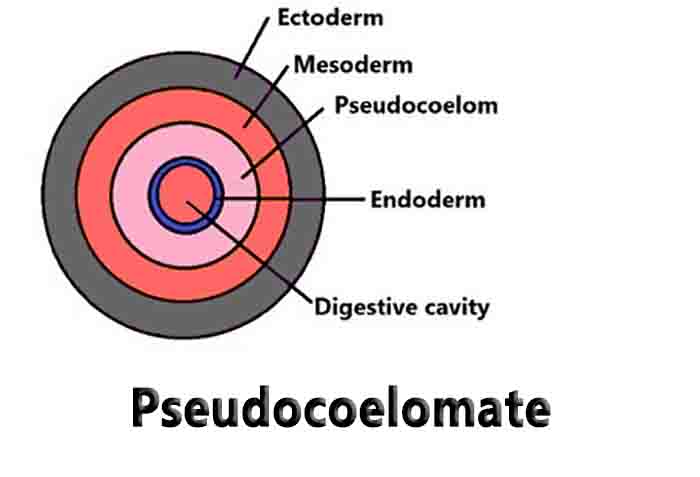Pseudocoelomate Definition
A pseudocoelomate is an organism with body cavity that is not derived from the mesoderm, as in a true coelom, or body cavity. A pseudocoelomate is also known as a blastocoelomate, as the body cavity is derived from the blastocoel, or cavity within the embryo.
A true coelom is lined with a peritoneum which serves to separate the fluid from the body cavity. In a pseudocoelomate, the body fluids bath the organs, and receive their nutrients and oxygen from the fluid in the cavity.
The presence of the blastocoel in the embryo is a condition universal to all metazoan. In most metazoans, the mesoderm becomes the lining of the body cavity, creating the true coelom. Some pseudocoelomates represent the primitive form of coelomates, and their ancestors never had a true coelom.
Other organisms have lost the peritoneum and have regressed to the pseudocoelomate condition. The larval form of some coelomates start as pseudocoelomates. A pseudocoelomate is often a small animal, which relies mostly on diffusion to distribute oxygen and nutrients to its cells.
These organisms typically have no circulatory system, or an open circulatory system which circulates a blood-like substance known as hemolymph within the body cavities of these animals. Because of this, the cavity is referred to as the hemocoel and the organism as a hemocoelomate.
Examples of Pseudocoelomate
Rotifers
Rotifers are extremely small multicellular organisms which exist by attaching to a substrate and filter feeding out of the water. Rotifers have a characteristic head region with hundreds of cilia, which work in unison to create currents of water that direct food particles to the mouth. Like other metazoans, the rotifers possess three distinct tissues, or are triploblastic.
The embryo of a rotifer forms a blastula, much like a human embryo. The blastocoel inside the embryo develops into a cavity which is not covered in peritoneum. The internal organs are bathed in fluid, and oxygen in diffused directly through the outer layers of the small animal.
This is the typical form of a pseudocoelomate, and is advantageous for the small organism because it does need a separate circulatory system to circulate oxygen.
Nematodes
Like the rotifers, the nematodes are small pseudocoelomates which have a modified body cavity. While the pseudocoelomate condition is sometimes thought of as ancestral, many organisms like the nematodes have advanced body parts. Nematodes reproduce sexual, produce games, and have advanced organs for reproduction and finding food.
These organisms can be free-living in the soil or water, or can be parasitic. Because of their advanced reproductive systems, these small organisms have adapted to nearly every environment on the planet.
Related Biology Terms
- Acoelomate – An organism which lacks a coelom completely, either due to lack of body tissues or a derived state where the body cavity has become filled in with cells.
- Eucoelomate – Also called a coelomate, this is the condition of a “true” body cavity which is lined with peritoneum and mesentery and separates the organs from the cavity and body.
- Blastocoel – The hollow cavity in the blastula, which eventually develops into the blastocoelom or gets filled in by cells.

